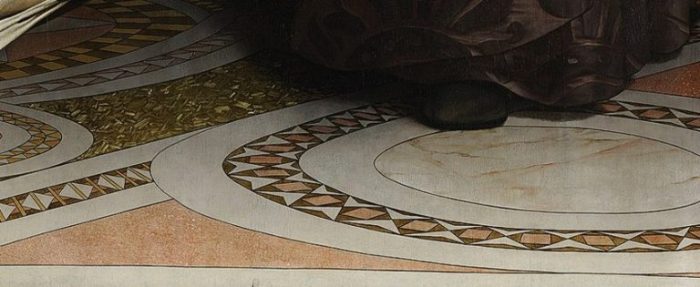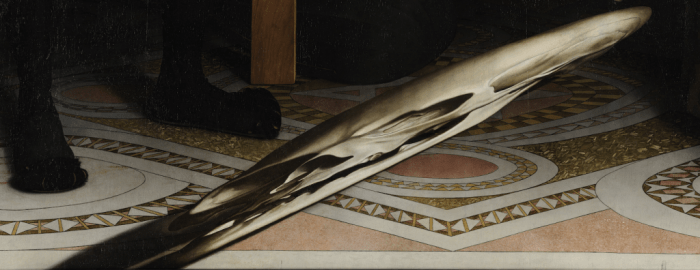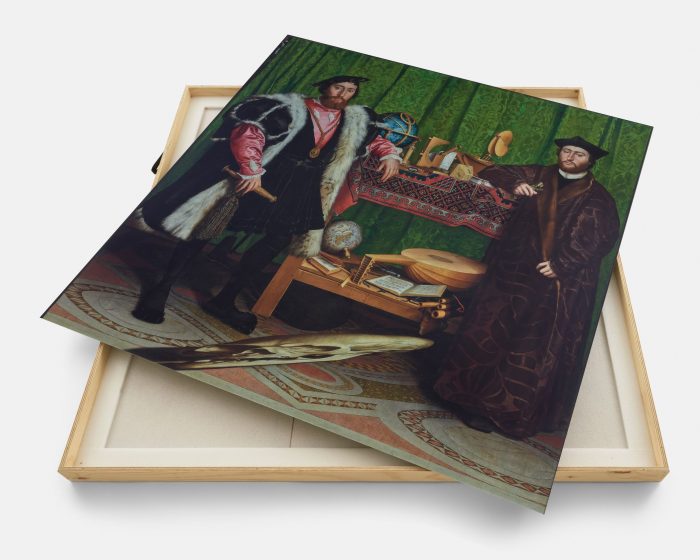Holbein’s the ambassadors has several references to religious content – Holbein’s ‘The Ambassadors’ is a masterpiece that invites viewers to embark on a journey of religious discovery. This painting, teeming with enigmatic symbols and concealed messages, unveils a profound narrative that explores the complexities of faith and the influence of the Reformation on art.
From the enigmatic skull to the celestial globe, each element within ‘The Ambassadors’ carries a deeper significance, revealing Holbein’s masterful ability to weave religious themes into his artistic creations.
Symbolism and Iconography

Hans Holbein the Younger’s “The Ambassadors” is a masterpiece of Renaissance art that is rich in religious symbolism. The painting depicts two ambassadors, Jean de Dinteville and Georges de Selve, standing in a room filled with objects that hold deep religious significance.
The skull in the foreground is a memento mori, a reminder of the transience of life and the inevitability of death. The lute and the book of music represent the harmony and beauty of the world, while the globe symbolizes the vastness of God’s creation.
These objects are arranged in a way that suggests a journey from the earthly realm to the heavenly realm. The ambassadors stand on a tiled floor that represents the earth, while the skull and the lute are placed on a higher level, suggesting the transition to a higher plane of existence.
Hidden Religious Messages
In addition to the obvious religious symbolism, “The Ambassadors” also contains several hidden religious messages. For example, the anamorphic skull in the lower left corner of the painting is only visible when viewed from a certain angle.
This hidden skull is a reminder of the death that awaits us all, even in the midst of life’s pleasures. It is also a symbol of the Reformation’s emphasis on the importance of repentance and salvation.
Influence of Reformation Theology, Holbein’s the ambassadors has several references to religious content
“The Ambassadors” was painted during a time of great religious upheaval in Europe. The Protestant Reformation was challenging the authority of the Catholic Church, and new ideas about faith and salvation were being debated.
The painting reflects the religious debates of the time. The ambassadors are dressed in the clothing of wealthy Catholics, but the objects in the room suggest a more Protestant interpretation of Christianity.
The emphasis on the skull and the transience of life is a reminder of the Protestant belief that salvation is not based on good works, but on faith in Jesus Christ alone.
Comparison to Other Religious Works
“The Ambassadors” is unique among religious paintings of the period. It is one of the few paintings that depicts a Protestant interpretation of Christianity.
The painting is also notable for its realism and its attention to detail. Holbein’s meticulous rendering of the objects in the room creates a sense of immediacy and presence.
Religious Symbolism in Holbein’s Other Works
Religious symbolism is a common feature in Holbein’s other works. In his painting “The Madonna of the Mayor of Basel,” the Virgin Mary is depicted as a Protestant housewife, surrounded by symbols of her faith.
Holbein’s use of religious symbolism reflects his own personal beliefs. He was a devout Protestant, and his paintings often reflect his religious convictions.
FAQ Compilation: Holbein’s The Ambassadors Has Several References To Religious Content
What is the significance of the skull in ‘The Ambassadors’?
The skull, a memento mori, serves as a reminder of the transience of life and the inevitability of death.
How does ‘The Ambassadors’ reflect the religious debates of the Reformation?
The painting depicts the tension between Catholicism and Protestantism, with the lute representing the former and the globe representing the latter’s emphasis on exploration and scientific inquiry.
What is the symbolism of the celestial globe in ‘The Ambassadors’?
The globe symbolizes the vastness of the universe and the Reformation’s challenge to traditional religious authority.

